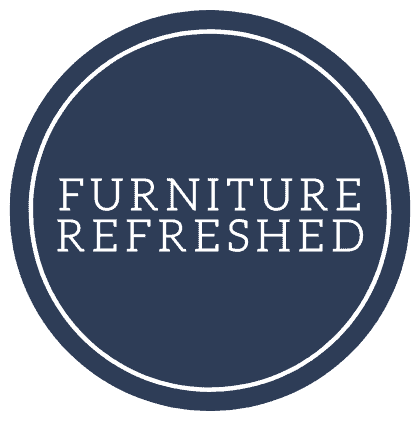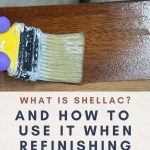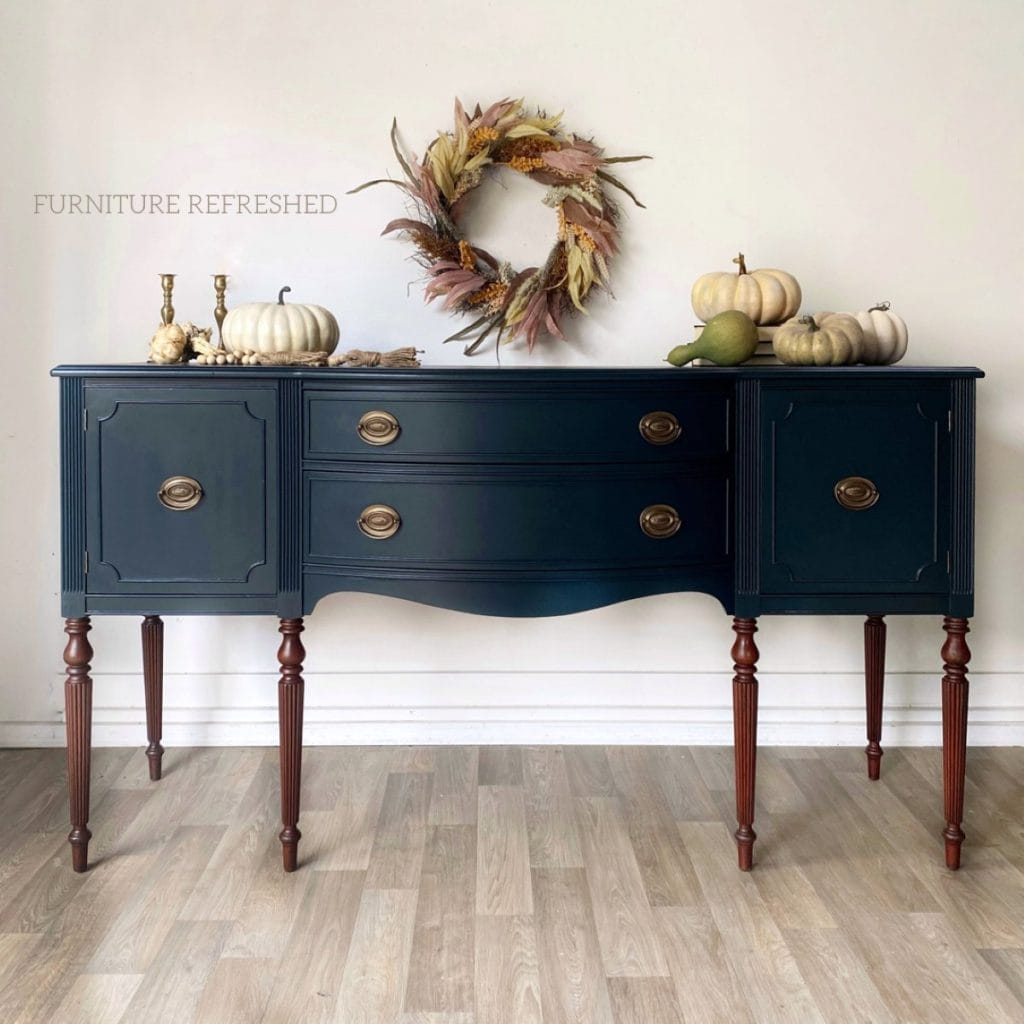What Is Shellac And How To Use It In Furniture Refinishing
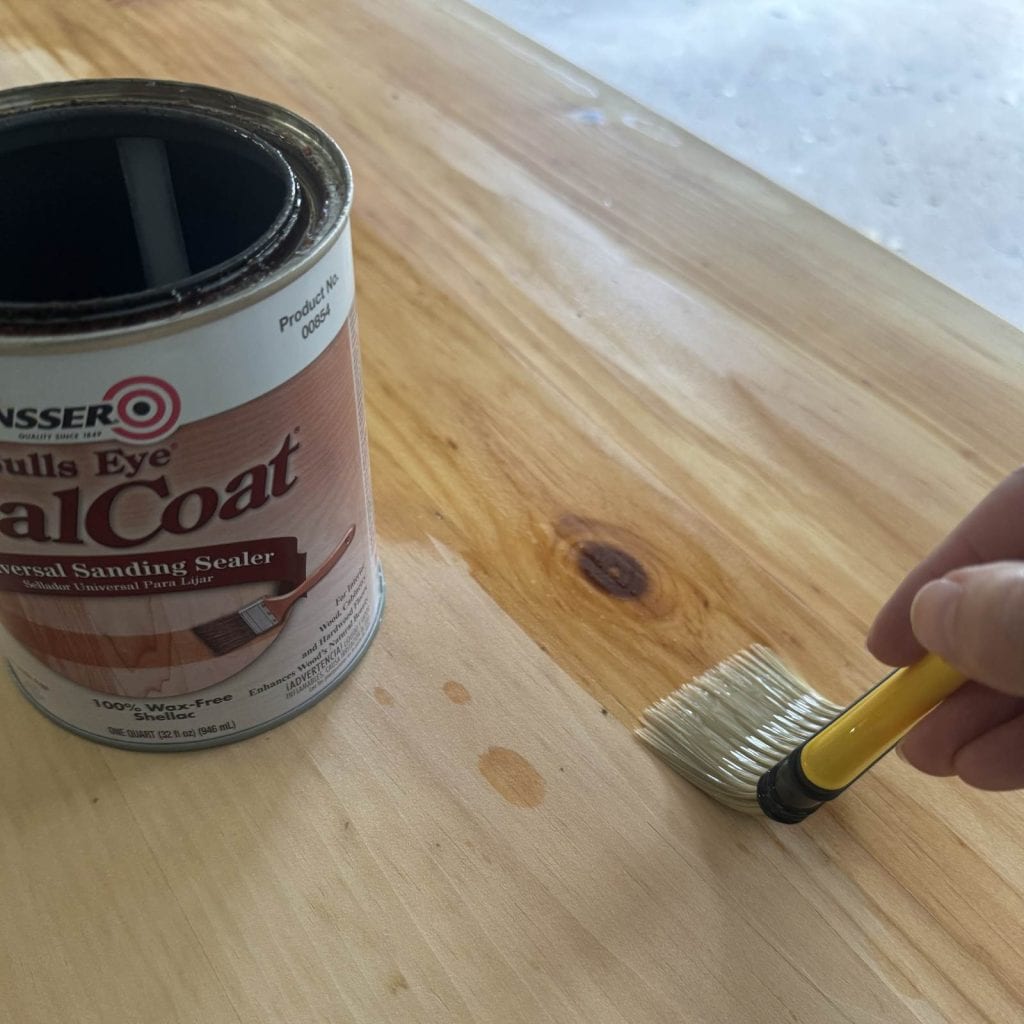
Let’s talk about shellac, because it’s one of the most important products in a furniture refinisher’s workshop! If you’ve ever wondered what shellac is or when to use it, you’re not alone. When I first started painting furniture, I had never even heard of it! But let me just say, it’s incredibly useful. From blocking bleedthrough and sealing odors to finishing raw wood, shellac is a go-to product in my refinishing process. In this post, I’ll break down exactly what shellac is and how I use it.
A note on product links
This post contains affiliate links, meaning I get a small commission on qualifying purchases.
What is shellac?
So what exactly is shellac? It is a natural substance – a resin that is secreted from the lac bug onto trees (in forests in India and Thailand). This resin is harvested from the tree bark, purified, and dried in thin flakes. These flakes are then dissolved in alcohol to make liquid shellac. Shellac has a short shelf-life (about one year once mixed with alcohol), so only buy what you’ll use.
You can purchase shellac in either flake or liquid form, although I’ve only ever bought the liquid. Shellac naturally has a small amount of wax in it, which is great when you want to use it as a finish sealer. However, if you are using it as a sealer under another product (such as paint), be sure to purchase dewaxed shellac.
Liquid Shellac Recommendations
Zinsser Bullseye Shellac – best for finish sealing
Zinsser Sanding Sealer – best for sealing/priming under another product
Common uses in furniture refinishing
Wood finishing
Shellac is a traditional wood finish sealer that is still in use today. It is easy to apply, dries quickly, and does a beautiful job of enhancing wood grain. And while it isn’t the most durable finish available, you can repair it easily by recoating. The alcohol in the liquid shellac will dissolve the existing dried shellac finish, and it all blends together seamlessly. Repairing a polyurethaned top requires removing the old finish entirely and starting from scratch.
Stain-blocking paint primer
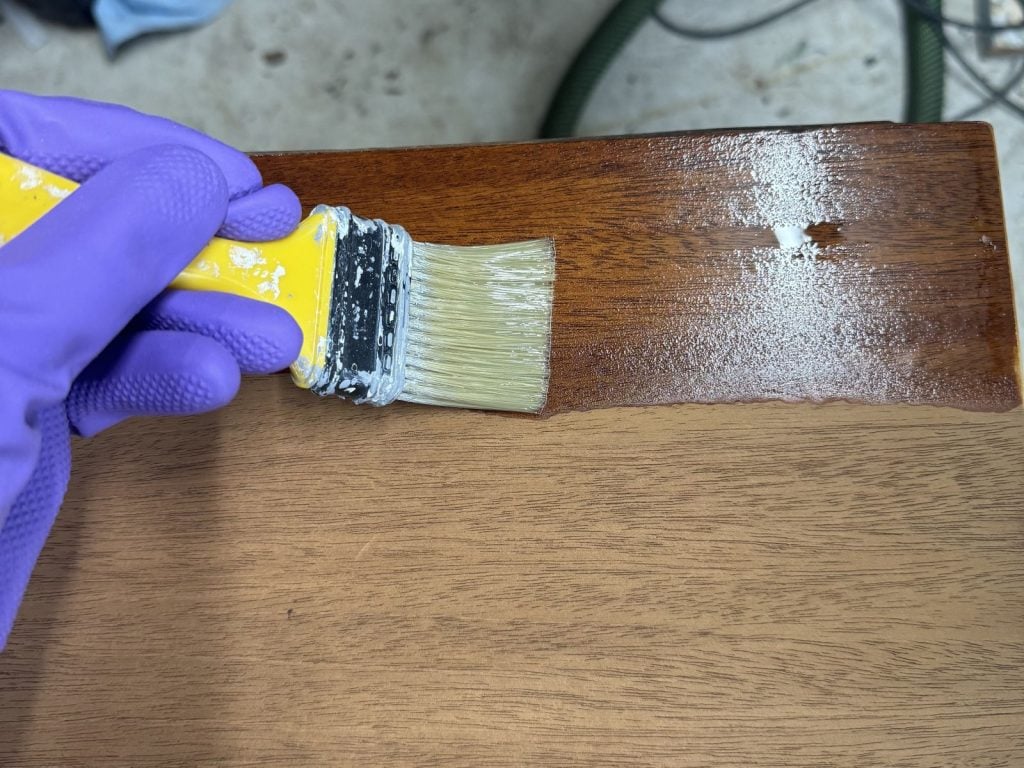
This is what I use shellac for most often! Wood has tannins in it that are drawn to the surface by water and water-based products. Shellac creates an effective barrier that prevents these tannins from bleeding through. Certain woods, such as mahogany, are particularly prone to bleedthrough and require special care when painting.
You can use dewaxed shellac on its own as a clear primer, which is usually what I do when I’m painting a darker color. BIN shellac-based primer that also works very well in preventing stain bleedthrough; I’ll use this when painting lighter colors. More details on priming furniture can be found in this post, and I also have a priming cheat sheet that can help you decide which primer is best for your project.
Removes/reduces odors
In addition to sealing in tannins and stains, shellac is also great for sealing in odors. While I will always try to remove as much odor as I can, sometimes older furniture is still left with a musty smell. A couple of coats of shellac will help get rid of that odor. I find the spray cans to be easiest for coating the insides of your piece (you’ll want to make sure you are sealing all of those unfinished surfaces).
Shellac cleanup
Shellac can be cleaned up using denatured alcohol or ammonia. I generally use these chip brushes to apply – I will wrap them in plastic wrap and place them in an airtight container or bag, and reuse them several times before throwing them away. Even if they get a little dried out, you can soak them in alcohol or even the liquid shellac itself to soften them up and make them usable again.
Summary
Shellac has been around for a while, but it is a product that is essential in modern furniture refinishing. Whether you’re sealing a raw wood finish or prepping a stubborn piece for paint, shellac is one of those products that’s worth having on hand. Have questions? I’m always happy to help, drop them in the comments!
Would you like to save this?
New to furniture painting?
Get my FREE Beginner’s Guide to Painting Furniture! This guide walks through the steps of a furniture painting makeover and includes a downloadable project planner and supply checklist.

